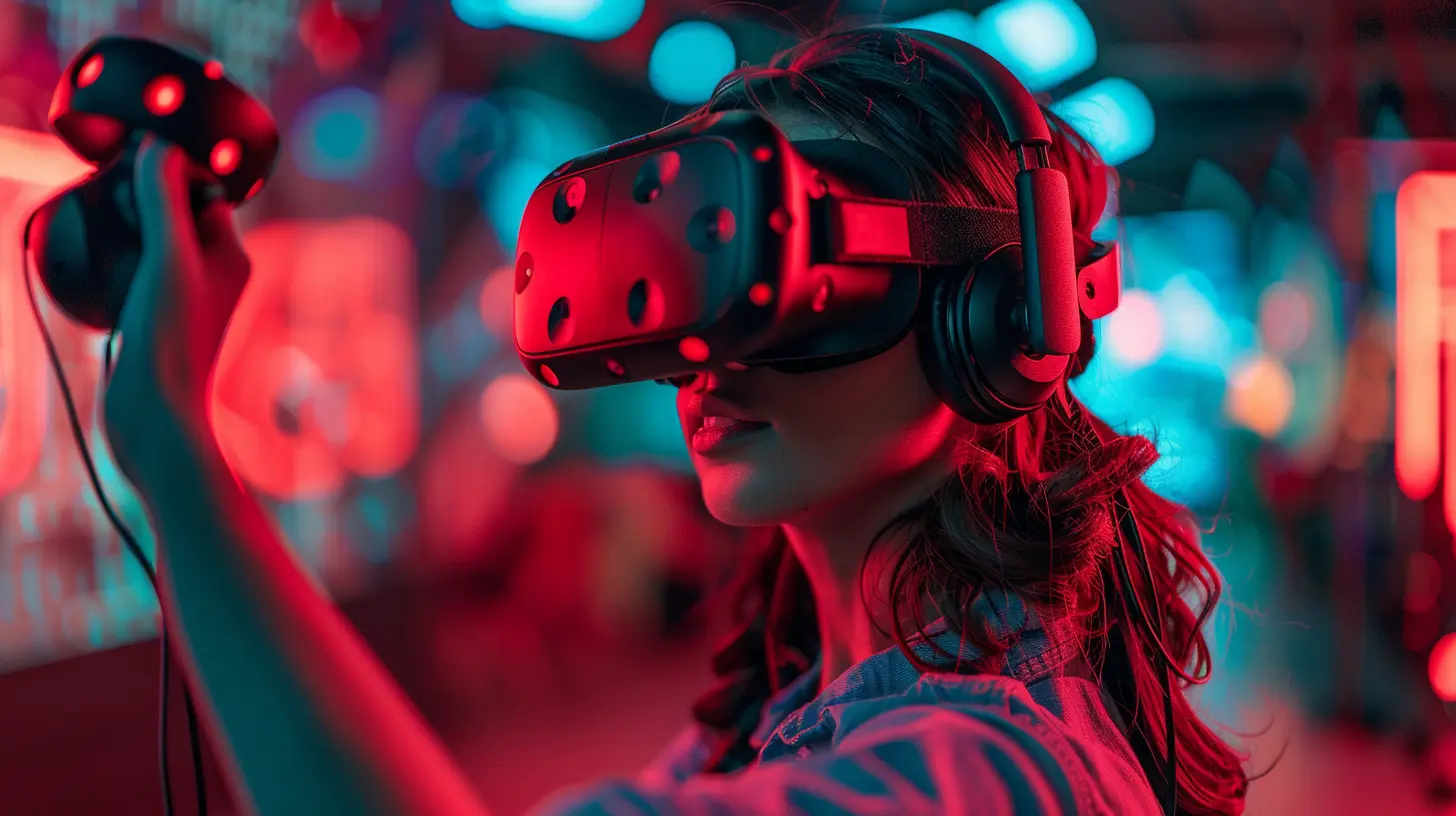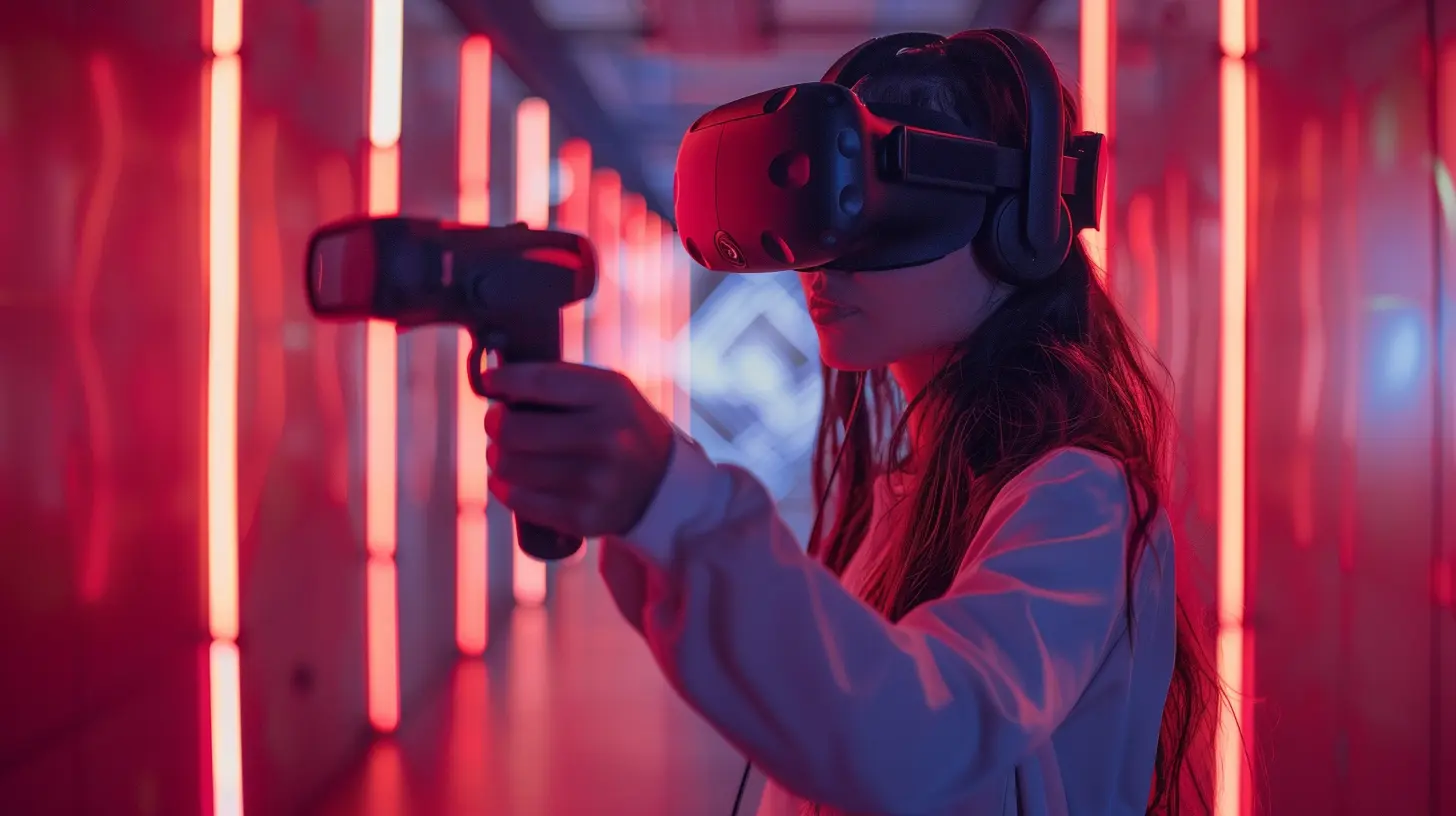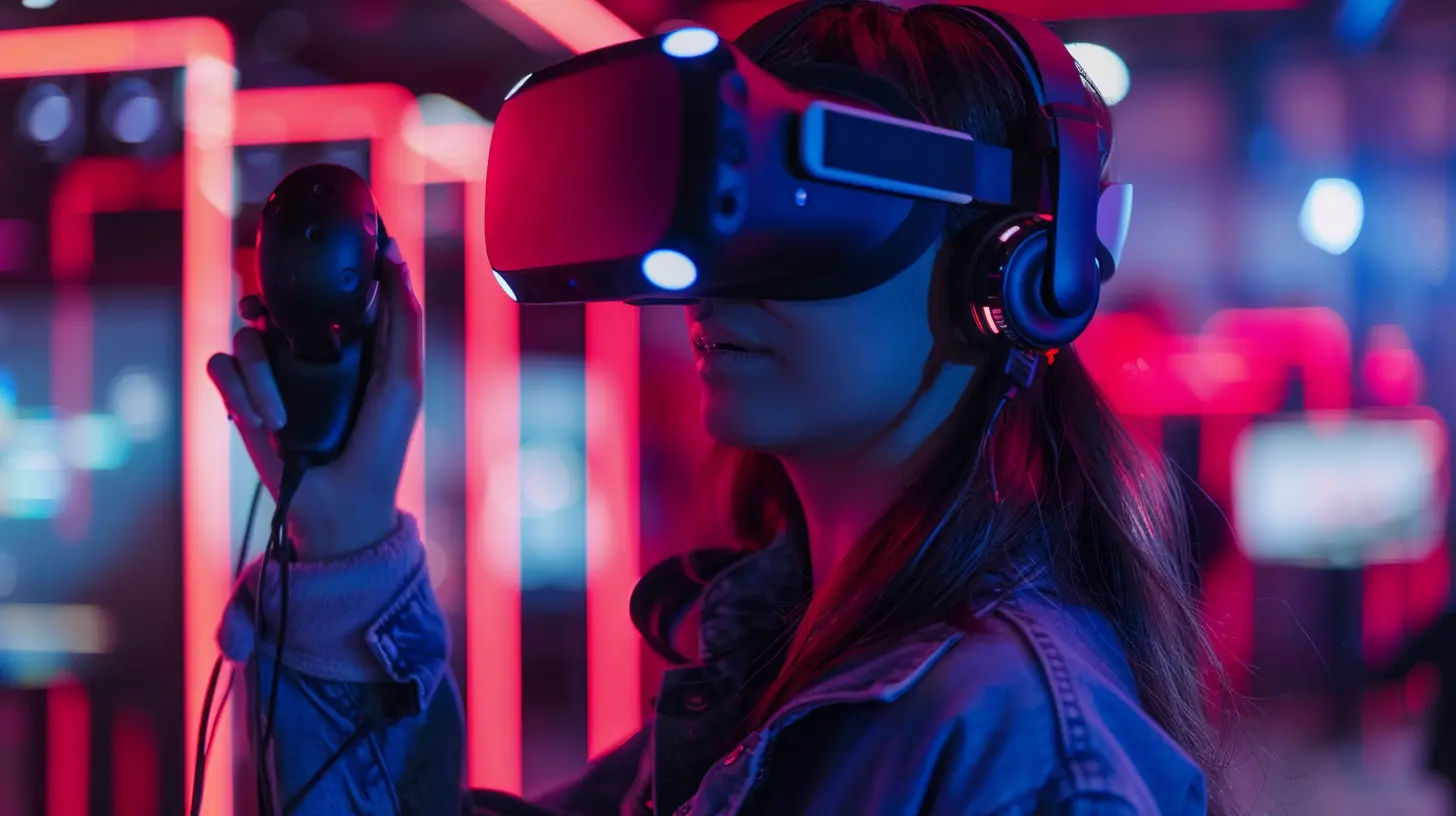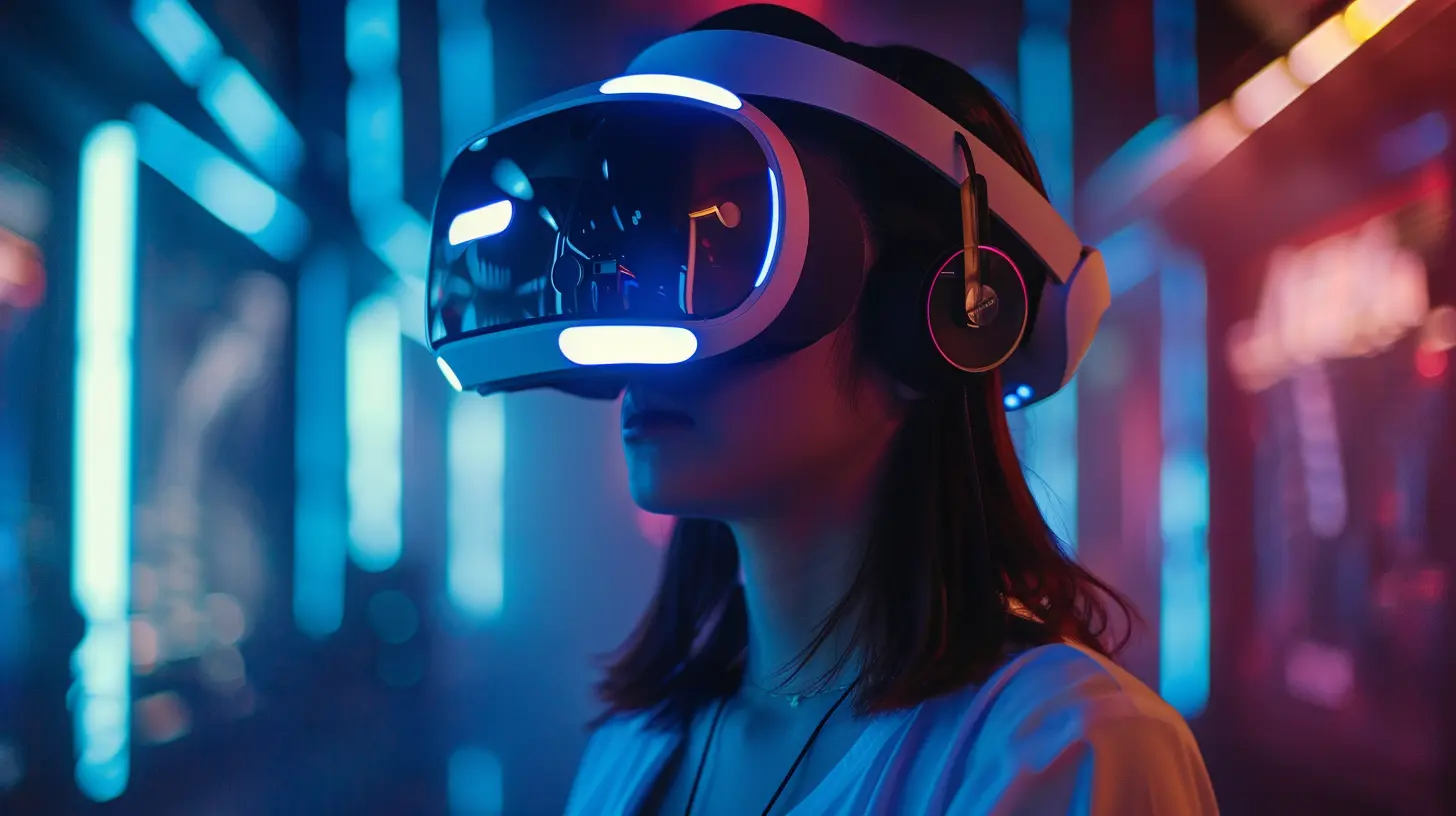The Relationship Between Physical Movement and VR Gameplay
18 September 2025
If you've ever slipped on a VR headset and found yourself dodging bullets, swinging lightsabers, or ducking imaginary obstacles, then you've already experienced the magic that happens when physical movement meets virtual reality gameplay. It's not just about pressing buttons anymore—it's about getting up, moving around, and fully stepping into an alternate universe. Pretty cool, right?
But beyond the "wow" factor, there's a deeper layer to all this. The relationship between physical movement and VR gameplay is transforming the way we think about gaming, fitness, and even mental well-being. So, grab your controllers (or just your curiosity) and let’s dive into this world where pixels meet real-life motion!
Why Physical Movement in VR Matters
Let’s start with the basics: why does moving around in VR even matter? Can't we just sit on the couch, controller in hand, like we always have?Well, we could. But that would be like ordering a salad and only eating the lettuce. You’re missing out on all the good stuff!
Virtual Reality was built with immersion in mind. The more your body moves along with your in-game actions, the more real everything feels. And that feeling of presence—like you’re truly there—is what makes VR such a powerful gaming platform.
The Link Between Movement and Immersion
Imagine playing a sword-fighting game where you're slashing enemies with real-life arm swings instead of button presses. That’s not just more fun—it’s more believable. Your brain starts connecting your physical actions with digital outcomes, creating a feedback loop that pulls you deeper into the experience.It's kind of like muscle memory. The more you physically engage, the more your brain wires that movement to the game. You become the character instead of just controlling them.
And let's be real: when you're ducking to avoid arrows or reaching out to grab virtual tools, you're not just playing—you’re living the game.
A New Era of Active Gaming
Do you remember the days of Wii Sports? That was the beginning of active gaming for many people. But VR takes that concept and cranks it up to eleven.Today’s VR games can turn your living room into a battlefield, a dance floor, or even a gym. And yes, you’ll be sweating—sometimes more than you do during a workout.
Fitness Through Gameplay? You Bet.
A lot of gamers are finding themselves accidentally getting fit. (The best kind of workout is the one where you don’t realize you’re doing it, right?)Titles like Beat Saber, Supernatural, and Thrill of the Fight are taking fitness to a whole new level, combining heart-pumping action with engaging gameplay that makes treadmill running look painfully boring by comparison.
And it’s not just anecdotal. Studies have shown that active VR games can meet or even exceed traditional cardio levels. You’re burning calories, improving coordination, and boosting your heart rate—all while slicing through waves of neon blocks or boxing an AI opponent.
Movement-Based Gaming Reduces Sedentary Lifestyle Risks
Let’s face it: most of us spend way too much time sitting. Whether it’s work, streaming, or gaming, the sedentary lifestyle is a modern problem. But VR gaming? That changes the game—literally.By getting players off the couch, VR introduces natural bouts of low- to high-intensity physical activity. Even a 30-minute VR session can offer more physical engagement than hours of traditional gaming.
Your body and your brain both benefit. You're loosening up tight muscles, improving posture, and giving your eyes a break from static screens. Not to mention, your energy levels get a serious boost.
How Movement Enhances Gameplay Mechanics
Physical movement doesn’t just make VR games more immersive or fitness-friendly—it actually enhances gameplay mechanics in ways no traditional game ever could.Precision and Coordination
Think about archery games in VR. You pull back a virtual bow using your actual arm strength and fine-tune your aim using real-time coordination. That requires way more skill than simply tapping a button to shoot.Your body becomes an instrument—a controller with limitless possibilities. And that adds depth and challenge to the game.
Spatial Awareness and Strategy
One of the coolest things about VR is how it tricks your mind into understanding digital space as real. Dodging an enemy’s attack in VR? You’re not just hitting “left” on the joystick—you’re moving your entire body to avoid damage.This adds a whole new strategic layer. You’ve got to think in 3D space. Where’s cover? Can you duck behind that barrel? Should you physically crouch or sidestep?
It's like turning your brain into a GPS for imaginary worlds.
Reaction Time and Reflexes
VR games ask a lot from your reflexes. But guess what? That demand trains your brain and your body to react faster and smarter.Your response time sharpens. Your movement flows more naturally over time. It’s like your body “learns” the game, and before you know it, you’re dodging, jumping, and striking on instinct.
The Emotional and Cognitive Benefits of Movement in VR
It’s not just your muscles that get stronger—your mind does, too.Boosts Mood and Reduces Stress
Physical activity is known to release endorphins, those feel-good chemicals that improve your mood and reduce stress. When you combine that with the immersive thrill of gameplay, the result is a potent mental health combo.Having a rough day? Put on your VR gear and dance it out, fight it out, or fly through a magical world. It’s like hitting the reset button for your brain.
Enhances Focus and Attention
Most VR games require you to multitask—track enemies, manage health, solve puzzles, and stay spatially aware. Add physical movement to the mix, and you’ve got one seriously demanding mental workout.Over time, this can lead to improved attention spans and better focus. Think of it as brain training disguised as fun.
The Challenges of Movement-Based VR (And How To Overcome Them)
Of course, no technology is perfect. Physical movement in VR does come with its own set of hurdles. But the good news? They’re all fixable.Space Constraints
Not everyone has a massive living room. Playing VR games in tight spaces can be tricky. But many games offer "room-scale" or stationary modes—and the tracking technology is getting smarter every year.Pro tip: use soft rugs or floor mats to mark your VR play area. It gives you a physical landmark, so you don’t accidentally karate-chop your bookshelf.
Motion Sickness
Some folks feel a little queasy their first few times in VR—especially in games that involve a lot of movement without your body actually moving (like flying or driving).The fix? Start slow. Choose games where your physical movement matches what you’re seeing. As your brain adapts, the nausea fades. It’s like finding your “VR sea legs.”
Fatigue
Yes, VR games can be exhausting. That’s a feature, not a bug.Take breaks. Drink water. Stretch between rounds. With time, your stamina grows—and you'll be surprised how much longer you can play without getting winded.
What the Future Holds
As VR technology keeps evolving, the relationship between physical movement and gameplay will only get stronger—and cooler.Imagine full-body haptic suits that let you feel virtual environments. Or omnidirectional treadmills that let you walk and run endlessly in any direction. We're heading toward a future where your entire body becomes the controller.
And it’s not just games. VR is being used for physical therapy, sports training, and even military simulations. All of it rooted in one beautiful truth: movement makes virtual experiences more real.
Final Thoughts
The relationship between physical movement and VR gameplay is more than just a tech trend—it’s a revolution. One that gets us moving, thinking, and experiencing games in ways we never imagined possible.Whether you're here for the fun, the fitness, or the immersion, one thing’s for sure: VR is changing the way we play by inviting our whole body into the game.
So the next time you slip on that headset, don’t just play—move. Because when your body becomes part of the adventure, that’s when the magic really begins.
all images in this post were generated using AI tools
Category:
Virtual Reality GamesAuthor:

Lucy Ross
Discussion
rate this article
1 comments
Rina Malone
Movement enhances immersion; play becomes reality.
October 1, 2025 at 4:14 PM

Lucy Ross
Absolutely! Physical movement in VR deepens player engagement, making the virtual experience feel more real and impactful.


